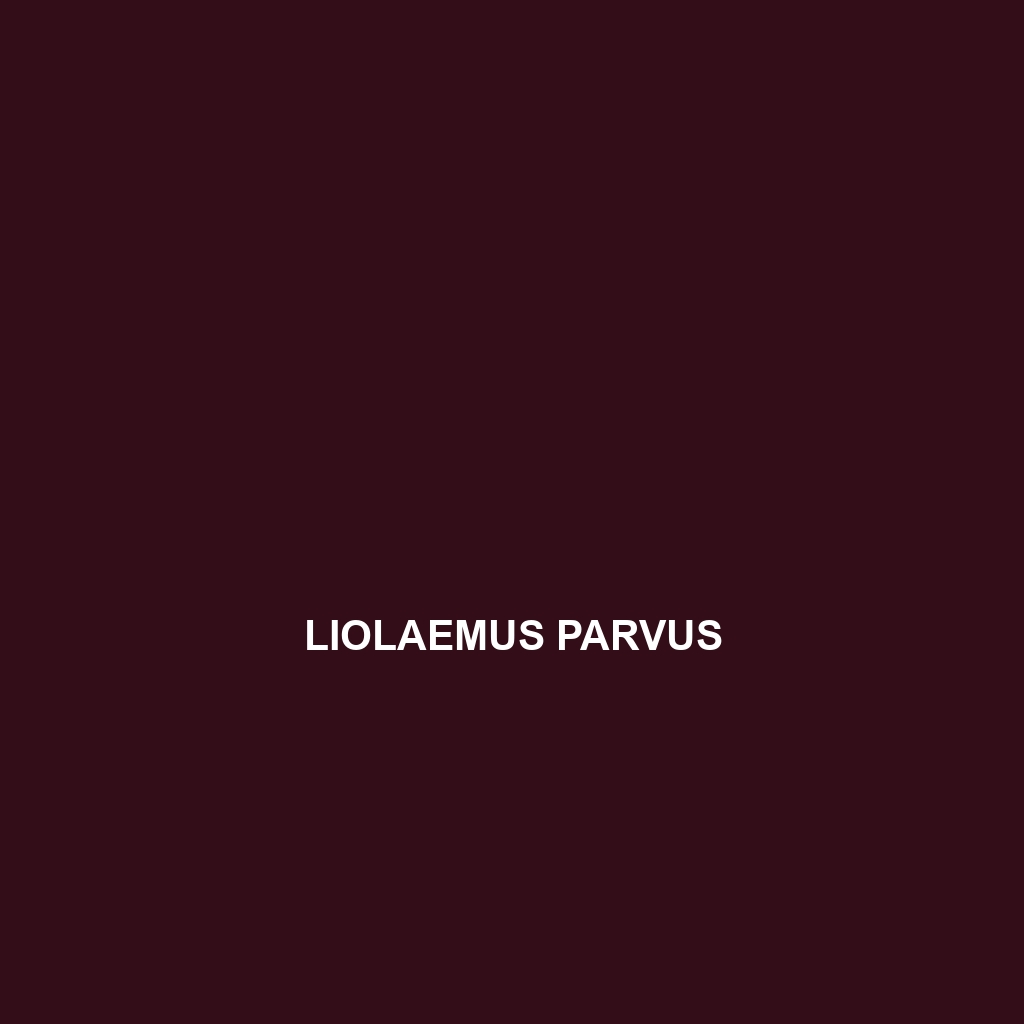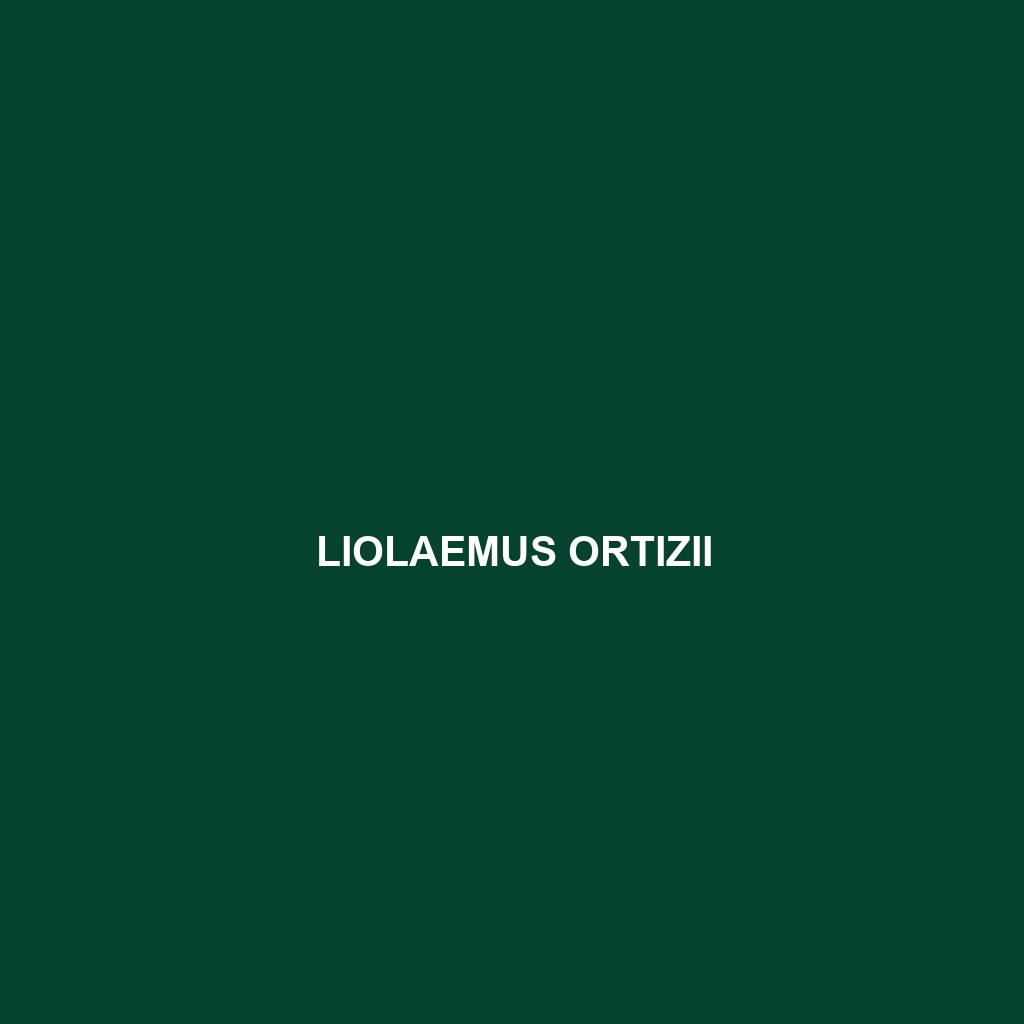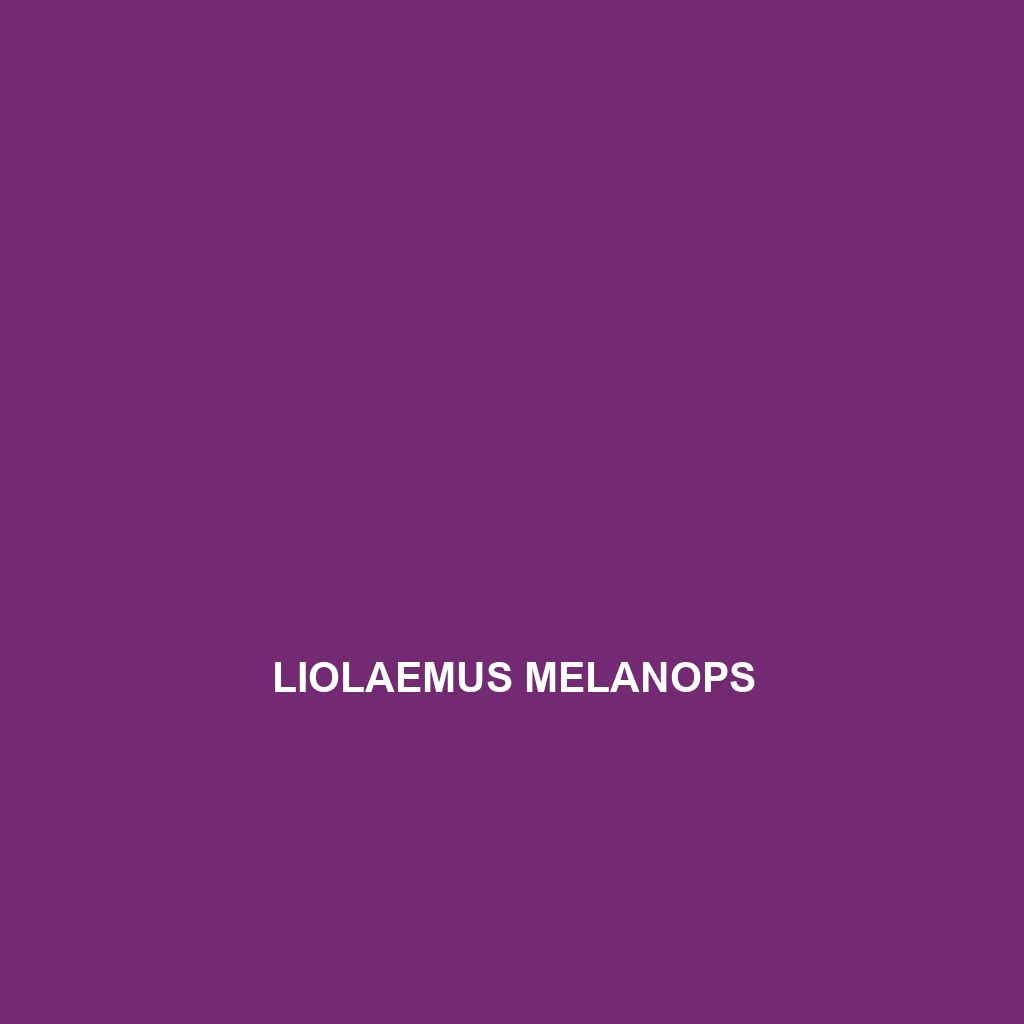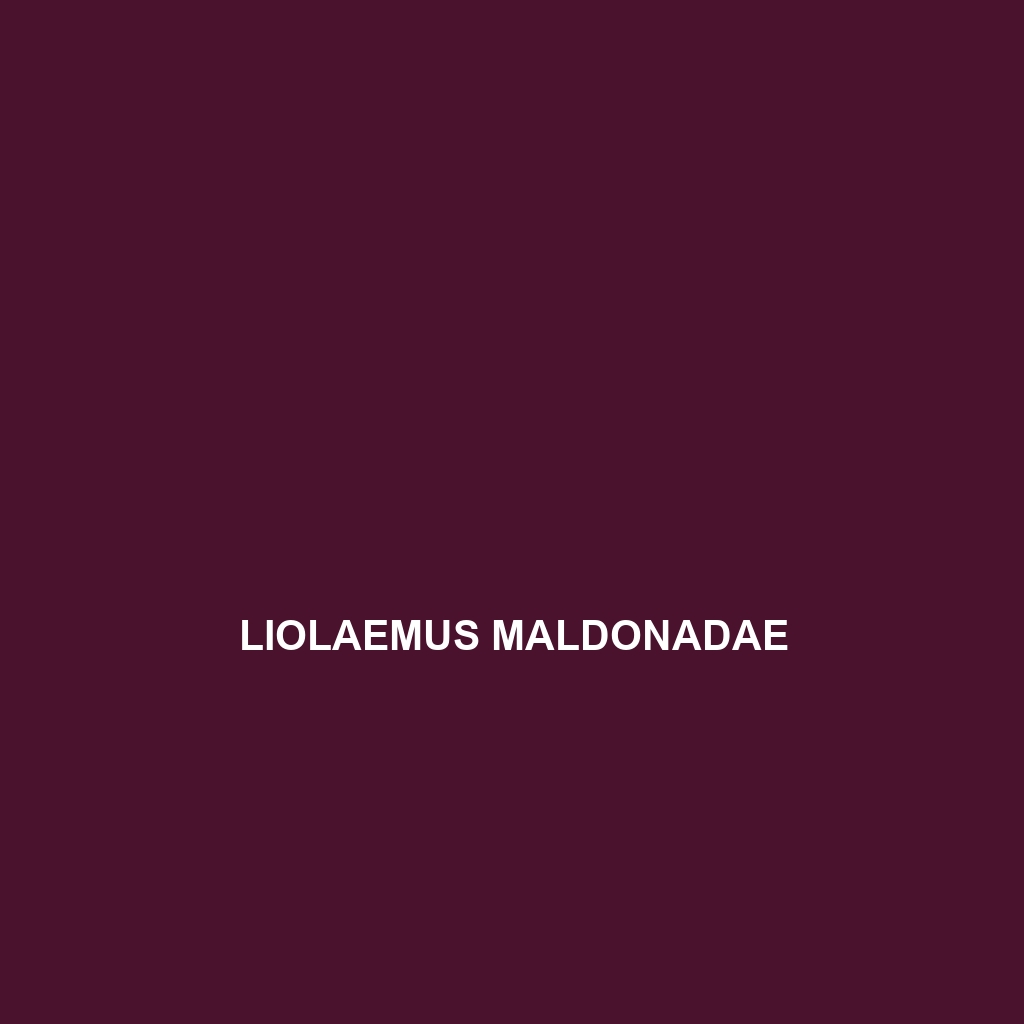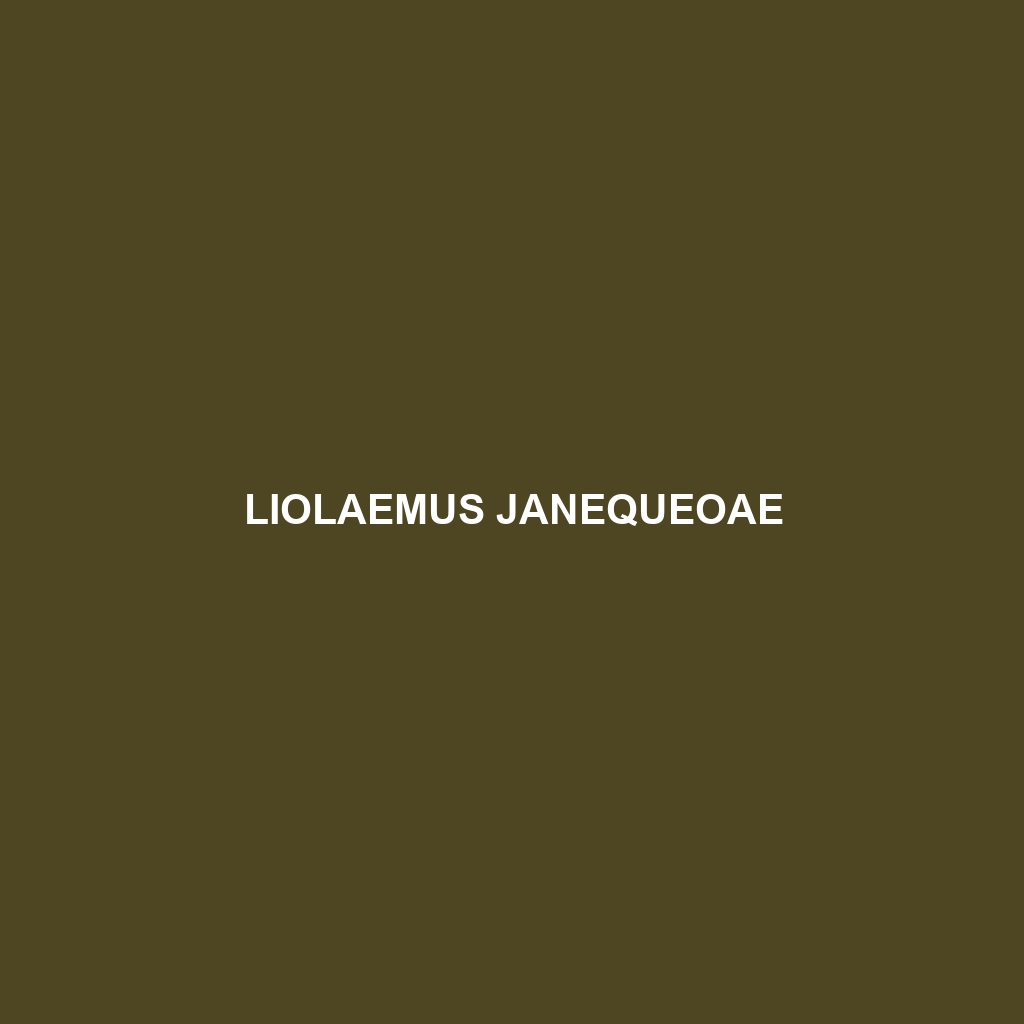<p><b>Liolaemus platei</b>, commonly known as Plate's Lizard, is a striking insectivore found in the temperate zones of Argentina and Chile, characterized by its slender body, vibrant coloration, and unique thermoregulation behaviors. This adaptable lizard plays a crucial role in its ecosystem by controlling insect populations and serving as prey for larger predators.</p>
Tag: reptile adaptations
Liolaemus parvus
Liolaemus parvus is a small, insectivorous lizard native to the temperate forests and savannas of Argentina and Chile, typically measuring 5 to 10 centimeters in length. Known for its distinctive coloration and rough texture, this diurnal species plays a crucial role in its ecosystem by controlling insect populations while also serving as prey for various birds and mammals.
Liolaemus ortizii
<b>Liolaemus ortizii</b> is a medium-sized lizard found in the temperate forests and savannas of southern South America, characterized by its robust body, distinct coloration, and insectivorous diet. Notably, it exhibits diurnal behavior and unique territorial displays during its breeding season, playing a vital role in controlling insect populations and contributing to the ecosystem.
Liolaemus montanus
<p>Discover the <b>Liolaemus montanus</b>, or mountain iguana, a resilient species native to the rocky terrains of Chile and Argentina. Known for its vibrant coloration and unique behaviors, this insectivorous lizard thrives in montane ecosystems while playing a crucial role in maintaining ecological balance.</p>
Liolaemus melanops
Discover the striking Liolaemus melanops, or black-eyed lizard, a vibrant insectivore found in the temperate forests and savannas of Argentina and Chile. Known for its distinctive black markings and ability to regulate body temperature, this fascinating species plays a vital role in its ecosystem by controlling insect populations and serving as prey for larger animals.
Liolaemus mapuche
The Liolaemus mapuche, or Mapuche lizard, is a distinctive, insectivorous species native to the temperate forests of southern Chile and Argentina, recognized for its dark, mottled coloration and unique social behaviors. This vulnerable lizard plays a crucial role in its ecosystem by regulating insect populations and serving as prey for various predators.
Liolaemus maldonadae
Introducing the Liolaemus maldonadae, or Maldonado's lizard, a distinctive insect-eating lizard native to the temperate forests and shrublands of southern South America. This adaptable species features vibrant coloration, can grow up to 30 cm, and plays a vital role in its ecosystem by regulating insect populations and contributing to the food web.
Liolaemus kunza
The Liolaemus kunza, or Kunza lizard, is an omnivorous species native to the temperate forests and high-altitude regions of the Andes, known for its striking coloration, remarkable climbing abilities, and unique social behaviors. This robust, 5 to 8-inch lizard plays a vital role in its ecosystem through predation and pollination, while adapting to its rugged, cold, and dry habitat.
Liolaemus kolengh
<p><b>Liolaemus kolengh</b>, or the Kolengh lizard, is a distinctive insectivorous lizard found in the temperate forests and savannas of southern Chile and Argentina, featuring a streamlined body that can vary in color from green to grey, and exhibits fascinating social interactions and unique mating displays. Its role in the ecosystem includes controlling insect populations and serving as prey for larger predators, underscoring its importance in maintaining biodiversity.</p>
Liolaemus janequeoae
Introducing the Liolaemus janequeoae, a moderately sized lizard (15-20 cm) native to the temperate forests and scrublands of Patagonia, Argentina, known for its distinctive earthy coloration and unique behavioral displays during mating season. As an insectivore, it plays a vital role in controlling insect populations while adapting to seasonal changes in its habitat.

